Upper Body Stretching
Author:
Reviewed by:
(21 years of Oly Lifting experience)
Unlock your full potential by engaging with our experts and community! Have questions about your fitness journey or looking for expert advice on weightlifting techniques? Don’t hesitate — leave a comment below and Ernesto Mendez will provide a personalized answer and insights to help you reach your goals.
Torokhtiy is reader-supported. Some links are affiliate links, and we may earn a commission at no extra cost to you. See our disclosure page for details.
It’s highly likely that at some point in your life, you will experience some form of physical pain. But did you know that incorporating a consistent upper body stretch routine into your day can help you alleviate some of these unwanted and lingering symptoms? In this article, we’ll explore the importance, key benefits and common concerns about stretching the upper body.
Whether you’re an athlete, office worker, or simply seeking to enhance your overall wellbeing, you’ll discover how adding some focus on upper body stretching and mobility exercises to your life can positively impact your physical and emotional health.
An upper body stretch is a technique that involves extending and lengthening the muscles in the upper portion of the body. This stretching routine can target various muscle groups including the arms, shoulders, chest, back, and neck, and is often used to improve flexibility and mobility, relieve tension, and enhance overall physical function.
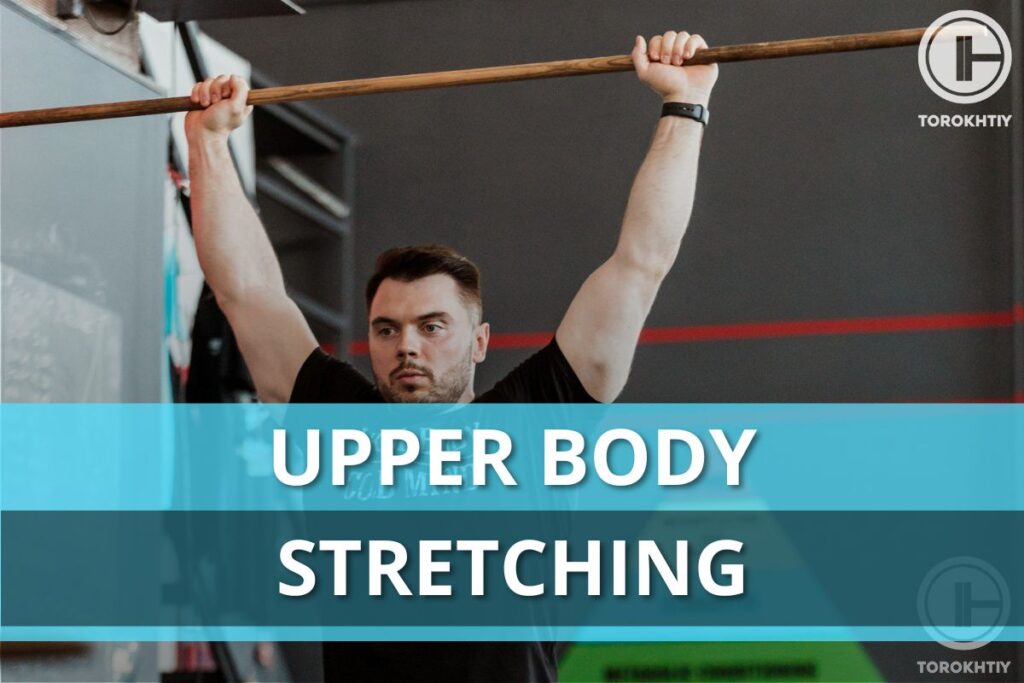
Why is Stretching Your Upper Body So Important?
Stretching your upper body is an essential part of maintaining physical well being and feeling balance. It involves targeting the muscles and joints in the neck, shoulders, arms, chest, and upper back. It functions by extending and lengthening the specific muscle fibres.
These joints and muscles in the upper body are crucial for supporting posture, stabilizing the spine, and assisting with breathing, as well as key components to skeletal and muscular functions such as arm and shoulder mobility. In the age of the sedentary working patterns many of us have adopted post-pandemic, stretching has never been more necessary.
Something as simple as increasing your sitting time at work can lead to severe implications, and deteriorating effects in health. With the removal of mandatory movement from the agenda, studies have shown that overall health and wellness decreases severely. Without continuous movement in our lives, stiffness, tightness and pain in our body starts to appear, which will have a direct effect on decreasing the range of motion, decreasing our performance and even increasing our probability for severe injury.
The Benefits of Upper Body Stretching
Improve Posture
Poor posture is a common issue that can cause pain and discomfort, particularly for those who spend extended periods sitting. Increased sitting time will increase the tightness of your chest, anterior shoulder and neck musculature. Incorporating a stretching routine, to improve the flexibility of these muscles can improve your overall posture drastically.
By lengthening the muscles and soft tissues of your chest, shoulders, and back, will promote better postural alignment, body awareness and balance. This can significantly reduce your pain and discomfort. Improving your upper body flexibility and mobility will increase your activity tolerance, enhancing physical and recreational function.
Reduce Risk of Injury
Regular upper body stretches are essential for reducing the risk of injury during physical activities such as weight lifting, running, or other sports. Tight muscles can lead to unnecessary pressure and increase the probability of muscle strain, resulting in increasing your susceptibility to injury. By incorporating dynamic stretches before exercise and static stretches afterward, you can increase your range of motion and significantly reduce the risks of injuries.
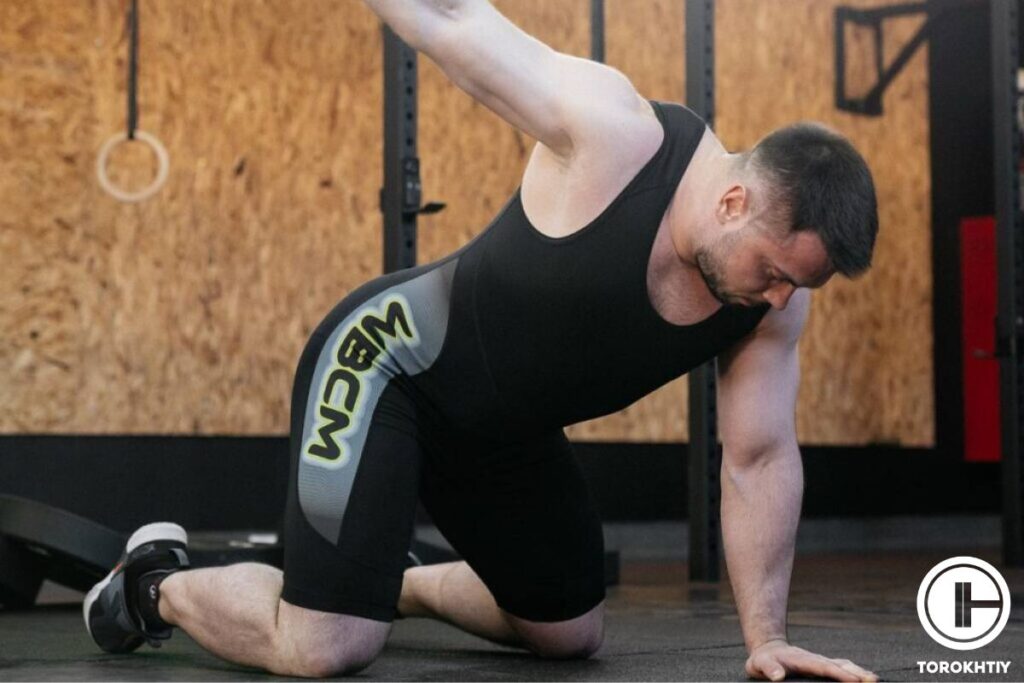
Increase Flexibility
A flexible body is a strong one. Improving your flexibility is a must to increase your adaptability, strength and activity tolerance. Individuals who perform repetitive tasks or engage in high volume physical activities are highly susceptible to injuries involving a lack of mobility and flexibility.
Improving flexibility, especially under load or tension can aid in the reduction of the risk of pulling or tearing muscles or other soft tissues in the body. So, if you have a physically demanding job or engage in regular high volume physical activities, making time for an upper body stretching routine will keep you in your job minimizing your risk of injury and improving your functional and occupational performance.
Follow us!

Free!
Get a 2-week Weightlifting Program as a bonus for the subscription to kickstart your training plan!

Free!
Relief of Tension and Pain
Upper body tightness and muscle tension can lead to pain and discomfort, negatively impacting overall wellbeing. Regular stretching can help alleviate this tension by promoting blood flow and relaxing tight muscles, reducing pain and discomfort.
This can lead to enhanced mobility and greater freedom of movement, promoting overall physical wellbeing. Incorporating regular upper body stretches into your routine can alleviate muscle tension, reduce pain, and enhance your overall quality of life. Whether you’re already living with pain or not there’s no better time to start stretching.
Improve Athletic Performance
Incorporating regular upper body stretches into their fitness regime is crucial for athletes and individuals who require upper body strength and flexibility for physical activities. By including these stretches in both your warm-up and cool-down, you give yourself the best chance of success.
As touched upon, upper body stretches improve flexibility and increase range of motion, thus reducing the risk of injury, making them an essential component of physical wellbeing for anyone engaging in upper body activities. The more physically able and prepared you are for performance, the better you’ll perform. Simple, right?
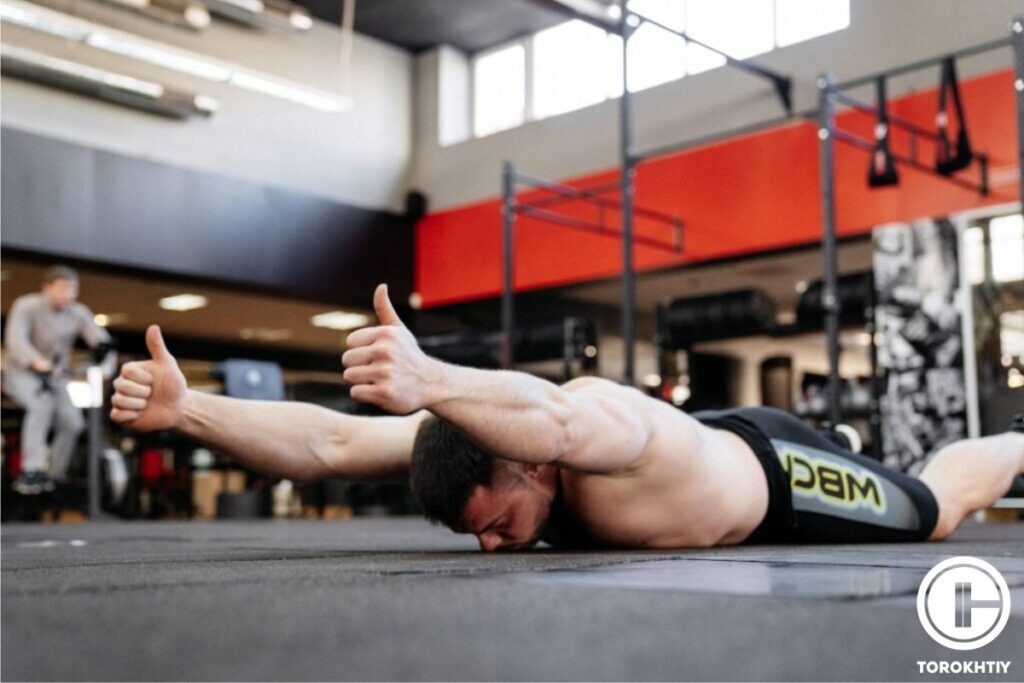
Enhance Range of Motion
Range of motion is a crucial aspect of physical wellbeing, and refers to the degree of movement a joint can achieve over the three planes of motion: coronal, sagittal and transverse. Upper body stretches are a surefire way to help enhance your range of motion, enabling you to move and function more freely, keeping the joints loose and limber. Improved range of motion has an array of health benefits, from injury prevention to performance in sporting activities and the carrying out of everyday tasks.
Reduce Stress Levels
Upper-body stretching can help reduce stress levels by reducing cortisol, a hormone that is released in response to stress. Cortisol levels can build up in the body over time, leading to tension, anxiety, and other stressful symptoms.
Studies have shown that stretching can help to reduce cortisol levels, promoting relaxation and reducing stress. Additionally, stretching can stimulate the release of endorphins, which are natural mood-boosting chemicals in the body that help mitigate stress, promote relaxation and ensure homeostasis.
Improved Circulation
Good circulation is important for both physical and mental wellbeing. It can promote healing and reduce inflammation by increasing blood flow to damaged tissues. Additionally, improved circulation can reduce muscle soreness and stiffness, resulting in enhanced overall physical function.
Incorporating regular upper body stretching into your routine can increase circulation to the muscles and joints in your neck, shoulders, arms, chest, and upper back. This improved circulation can lead to reduced pain and discomfort, promoting overall physical and mental preparedness and wellbeing.
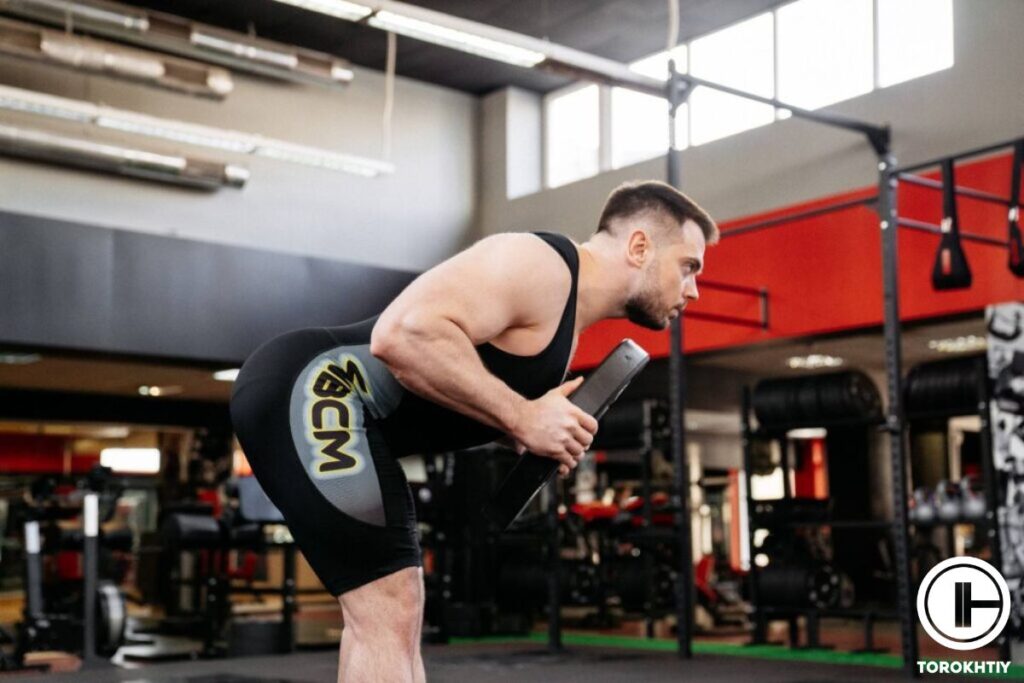
The Best Upper Body Stretching Exercises
Treat your upper body cool down with the same respect as your workout by incorporating some of these upper body static stretches into your routine!
Shoulder Stretch
Stand with your feet shoulder-width apart and raise your right arm, bending it at the elbow so your hand reaches your upper back. Then, reach your left arm behind your back and grasp your right elbow, gently pulling your right arm towards your left shoulder.
Hold for 30 seconds, then repeat on the other side.
This stretch helps to increase flexibility in the shoulders and upper back, improving posture and reducing the risk of injury.
Chest Stretch
Stand facing a wall and place your hands on the wall at shoulder height. Lean forward until you feel a stretch in your chest muscles.
Hold for 30 seconds, then repeat 3-4 times
This stretch is great at reducing tension and improving posture. It is an excellent stretch after a workout.
Triceps Stretch
Stand with your feet shoulder-width apart and raise one arm overhead. Bend your elbow, then place your hand behind your neck. Use your other hand to gently pull your elbow back until you feel a stretch in your triceps.
Hold for 30 seconds, then repeat on the other side.
Arm stretches after a workout are underrated, but they’re very important for maintaining functional movement the days after a tough session and aiding in recovery.
Upper Back Stretch
Sit on a chair, then grasp your hands together behind your head. Gently pull your elbows back until you feel a stretch in your upper back. Hold for 30 seconds, then repeat 3-4 times.
Your upper back will love you for this one, and reward you with improved posture over time.
Neck Stretch
Stand or sit with your head facing forward. Slowly tilt your head to one side, bringing your ear towards your shoulder.
Hold for 30 seconds, then repeat on the other side.
This is a great stretch for neck flexibility and improving overall physical function. Do this regularly and you’ll loosen up in no time.
Arm and Shoulder Stretch
Stand with your feet shoulder-width apart and raise your right arm, bending it at the elbow so your hand reaches your upper back. Reach your left arm behind your back and grasp your right elbow. Gently pull your right elbow towards your left shoulder, feeling the stretch in your arm and shoulder muscles.
Hold for 30 seconds and repeat on the other side.
This is one of the best arms stretches after a workout as it helps to reduce muscle soreness and stiffness in more than one muscle group.
FAQ
Why Are Upper Body Stretches Important?
Upper body stretches are important because they help to improve flexibility, increase range of motion, reduce the risk of injury, improve posture, and alleviate tension and pain in the upper body.
They also promote relaxation and reduce stress levels, leading to better mental and physical health. Incorporating upper body stretches into your daily routine can improve your quality of life, reduce pain and discomfort, and enhance your overall physical function.
How Do You Stretch Your Upper Body Before Working Out?
Stretching your upper body before working out is essential for preventing injury and enhancing performance. Start with light cardio like walking on a treadmill or another low-intensity exercise to warm up, then incorporate a variety of upper body stretches, primarily dynamic stretches like shoulder rolls, arm jacks or arm swings.
Remember to focus on your breath, start slow, and don’t push too hard. You’re preparing your body to workout, not going full-fisted from the get-go!
Do You Need to Stretch Your Upper Body?
Yes, stretching your upper body is important for maintaining physical well being. It can improve flexibility, increase range of motion, reduce the risk of injury, improve posture, and alleviate tension and pain in the upper body.
Incorporating upper body stretches into your daily routine can enhance your physical function, reduce pain and discomfort, and improve your overall quality of life.
Why Do I Have So Much Tension in My Neck and Shoulders?
Tension in the neck and shoulders can be caused by a variety of factors, including poor posture, stress, overuse of muscles, and injury. Sedentary lifestyles and long periods of inactivity can also contribute to tension in these areas.
Incorporating upper body stretches into your routine, improving posture, reducing stress, and taking breaks to move around and stretch can help alleviate tension in the neck and shoulders. Consulting a healthcare professional may also be beneficial for addressing underlying issues.
Conclusion
Incorporating upper body stretches into your daily routine is essential for maintaining physical and mental wellbeing. Upper-body stretches help increase flexibility, reduce the risk of injury, improve posture, and alleviate tension and pain in the upper body. By targeting the muscles and joints in the neck, shoulders, arms, chest, and upper back, the range of motion and physical function can be enhanced. Regular stretching can also promote relaxation and reduce stress levels, leading to better mental health. In short, incorporating upper body stretches into your routine is simple and can make a significant difference in improving not just a physical feeling, but your overall quality of life as well.
Already stretch regularly? Or considering taking up yoga? Wherever you’re at, we’d love to hear about your experience incorporating upper body stretches into your routine! Share your thoughts and experiences in the comments below and let’s start a discussion on the benefits of stretching for physical and mental wellbeing in the community!
Also read:
- Lifting Overhead
- Fitness Mobility
- Overhead Squat
- Tricep Stretches
- Thoracic Mobility Exercises
- Lat Stretches
References:
- Daily muscle stretching enhances blood flow, endothelial function, capillarity, vascular volume and connectivity in aged skeletal muscle // National Library of Medecine: https://www.ncbi.nlm.nih.gov/pmc/articles/PMC5978284/
- Mobility and stability adaptations in the shoulder of the overhead athlete // National Library of Medecine: https://pubmed.ncbi.nlm.nih.gov/18081365/
- The reliability and minimal detectable change of shoulder mobility measurements using a digital inclinometer // National Library of Medecine: https://pubmed.ncbi.nlm.nih.gov/20690872/
- Effect of restorative yoga vs. stretching on diurnal cortisol dynamics // National Library of Medecine: https://pubmed.ncbi.nlm.nih.gov/25127084/
- The Impact of Work-From-Home on Sedentary Behaviors and Exercising // StanfordEdu: https://longevity.stanford.edu/wp-content/uploads/2021/05/Sedentary-Brief.pdf
- Photos by Torokhtiy Media Team.
Why Trust Us?
With over 20 years in Olympic weightlifting, strength training, nutrition coaching, and general fitness our team does its best to provide the audience with ultimate support and meet the needs and requirements of advanced athletes and professional lifters, as well as people who strive to open new opportunities and develop their physical capabilities with us.
By trusting the recommendations of our certified experts in coaching, nutrition, and sports training programming, as well as scientific consultants, and physiotherapists, we provide you with thorough, well-considered, and scientifically proven content. All the information given in the articles concerning workout programming, separate exercises, and athletic performance, in general, is based on verified data.
The product testing process is described in more detail here.
Author: Ernesto Mendez
Orthopedic Clinical Specialist
Best Results: Snatch – 208 kg,
C&J – 240 kg
Dr. Ernesto Mendez is a licensed physical therapist, a board Orthopedic Clinical Specialist (OCS) and founder of Movement 4 Wellness Physical Therapy, LLC. He earned his degree from Thomas Jefferson University. He is also an Olympic weightlifting coach (USAW L1) and Functional Fitness Level 1 Trainer. His experience includes the areas of pain management, movement analysis, injury recovery, surgical rehab, corrective exercise, and athletic, military, and occupational performance. Dr Mendez is passionate about Olympic weightlifting and fitness. Ernesto Mendez is responsible for designing multiple training programs, writing blog articles, posting daily weightlifting content, doing live weightlifting and mobility seminars.
Reviewed by: Oleksiy Torokhtiy
Olympic Weightlifting Champion, PhD in Sport Science
Best Results: Snatch – 200 kg,
C&J – 240 kg
Oleksiy Torokhtiy is a professional athlete boasting 20 years of experience in Olympic weightlifting. With multiple European and World titles under his belt, he has showcased his prowess in two Olympic Games (Beijing 2008 and London 2012). Upon concluding his illustrious career, Oleksiy dedicated himself to coaching. By 2022, he had conducted over 200 weightlifting seminars worldwide. He is the visionary behind an international sportswear and accessories brand known for its motto, “Warm Body Cold Mind.” Additionally, he is an esteemed author and the creator of a series of training programs and eBooks.




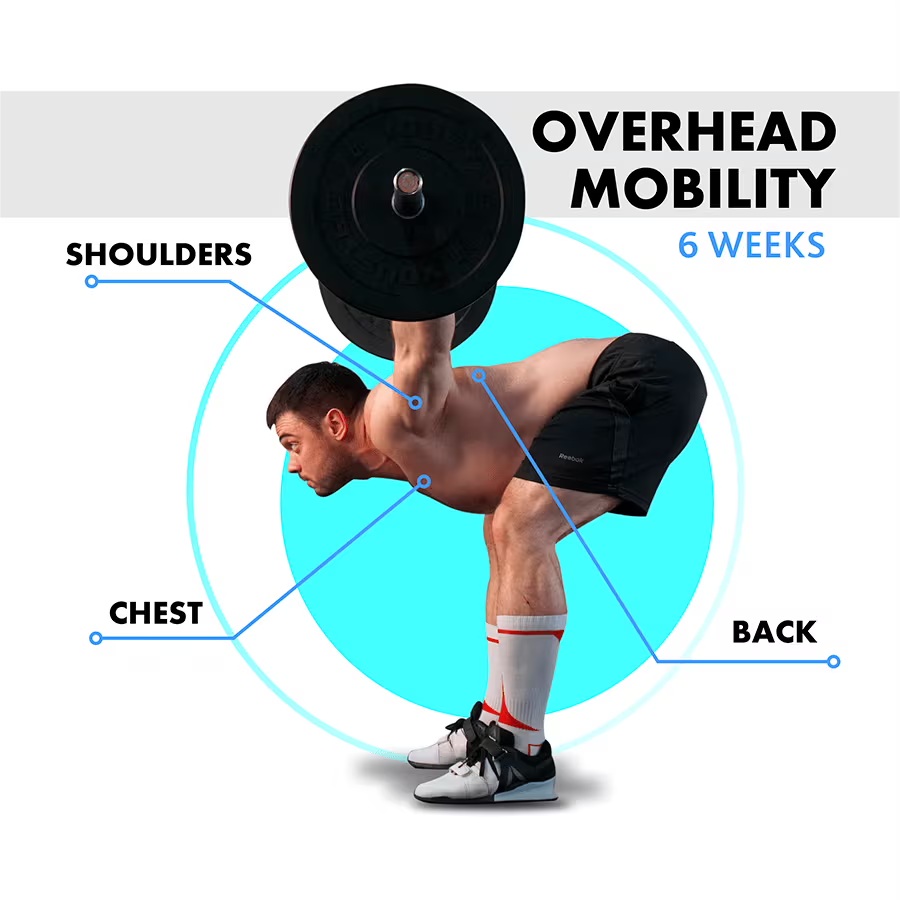
Still have questions after reading our article? Unlock your full potential by engaging with our experts and community! Don’t hesitate — leave a comment below and Ernesto Mendez will provide a personalized answer and insights to help you reach your goals.